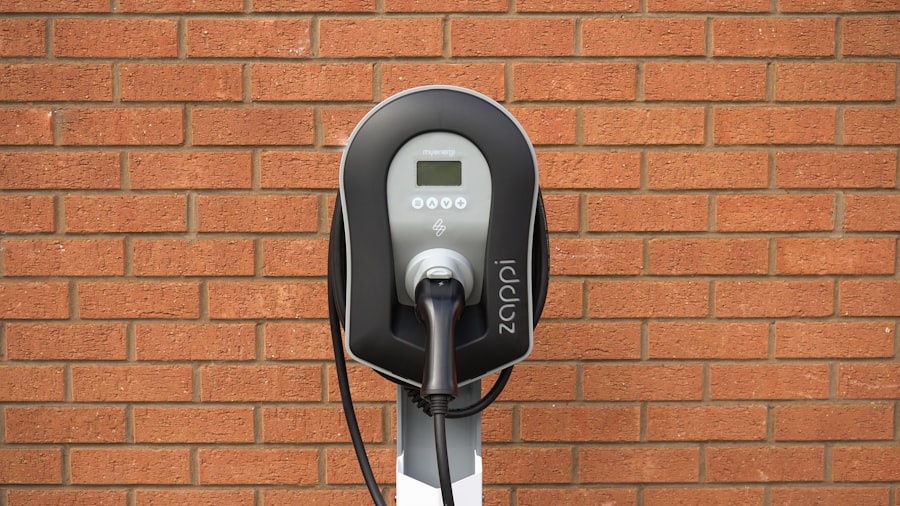In an era marked by rapid technological advancements and growing environmental concerns, smart energy management has emerged as a pivotal strategy for optimizing energy consumption. This approach leverages innovative technologies to enhance efficiency, reduce waste, and promote sustainability. Smart energy management encompasses a range of practices and tools designed to monitor, control, and optimize energy use in homes, businesses, and industries.
The integration of smart technologies not only facilitates better energy management but also contributes to the broader goal of reducing carbon footprints and mitigating climate change. The increasing demand for energy, coupled with the finite nature of fossil fuel resources, has necessitated a shift towards more sustainable energy practices. Smart energy management systems utilize data analytics, automation, and connectivity to provide users with insights into their energy consumption patterns.
As we delve deeper into the role of the Internet of Things (IoT) in energy management, it becomes evident that this interconnected network of devices is transforming how we interact with energy resources.
Key Takeaways
- IoT plays a crucial role in enhancing smart energy management by enabling real-time monitoring and control of home energy usage.
- Implementing IoT devices in home energy systems leads to increased efficiency, cost savings, and better integration with renewable energy sources.
- Various IoT technologies, such as smart meters and connected sensors, facilitate detailed energy consumption tracking and automation.
- Challenges in IoT-based energy management include data security, device interoperability, and initial setup costs.
- Future trends point to advanced AI integration and expanded IoT applications for more sustainable and intelligent energy management solutions.
Understanding IoT and Its Role in Energy Management
The Internet of Things (IoT) refers to the network of physical devices embedded with sensors, software, and other technologies that enable them to connect and exchange data over the internet. This interconnected ecosystem allows for seamless communication between devices, facilitating real-time data collection and analysis. In the context of energy management, IoT plays a crucial role by providing the infrastructure needed to monitor energy usage, automate processes, and optimize consumption patterns.
IoT devices can gather vast amounts of data regarding energy consumption in real-time. For instance, smart meters can track electricity usage at granular levels, providing insights into peak consumption times and identifying areas where energy is being wasted. This data can then be analyzed to develop strategies for reducing consumption and improving efficiency.
Furthermore, IoT enables predictive analytics, allowing users to anticipate future energy needs based on historical data trends. This capability is particularly valuable for businesses that rely on consistent energy supply for their operations.
Benefits of Implementing IoT in Home Energy Management

The implementation of IoT in home energy management offers numerous benefits that extend beyond mere convenience. One of the most significant advantages is the potential for substantial cost savings. By utilizing smart devices that monitor and control energy usage, homeowners can identify inefficiencies and adjust their consumption habits accordingly.
For example, smart thermostats can learn a household’s heating and cooling preferences, automatically adjusting settings to optimize energy use while maintaining comfort. Moreover, IoT-enabled systems provide users with greater visibility into their energy consumption patterns. Homeowners can access real-time data through mobile applications or web interfaces, allowing them to track usage trends and make informed decisions about their energy consumption.
This level of transparency empowers individuals to take control of their energy bills and encourages more sustainable practices. Additionally, many utility companies offer incentives for customers who adopt smart technologies, further enhancing the financial benefits of implementing IoT solutions.
IoT Devices and Technologies for Smart Energy Management
A wide array of IoT devices and technologies are available for smart energy management, each designed to address specific aspects of energy consumption. Smart meters are among the most fundamental devices in this ecosystem, providing real-time data on electricity usage and enabling two-way communication between consumers and utility providers. These meters facilitate dynamic pricing models, allowing users to adjust their consumption based on fluctuating energy costs.
Smart thermostats represent another critical component of IoT-enabled energy management. Devices like the Nest Learning Thermostat not only allow users to control their heating and cooling systems remotely but also learn user preferences over time. This adaptive learning capability enables the thermostat to optimize energy use without sacrificing comfort.
Additionally, smart plugs and outlets can monitor the power consumption of individual appliances, providing insights into which devices are contributing most significantly to overall energy use.
How IoT Enables Real-time Monitoring and Control of Energy Usage
One of the most transformative aspects of IoT in energy management is its ability to facilitate real-time monitoring and control of energy usage. Through connected devices, homeowners can receive instant feedback on their energy consumption patterns, enabling them to make immediate adjustments as needed.
Real-time monitoring also extends to automated systems that can respond to changing conditions without requiring user intervention. For example, smart lighting systems can automatically adjust brightness levels based on natural light availability or occupancy detection. This level of automation not only enhances convenience but also contributes to significant energy savings by ensuring that lights are only used when necessary.
Furthermore, integration with mobile applications allows users to control their energy systems remotely, providing flexibility and convenience in managing their home environments.
Integrating IoT with Renewable Energy Sources for Efficient Management

The integration of IoT with renewable energy sources represents a significant advancement in smart energy management. As more households adopt solar panels or wind turbines, the need for effective management systems becomes increasingly critical. IoT technologies can optimize the use of renewable energy by monitoring production levels and consumption patterns in real-time.
For instance, a smart home equipped with solar panels can utilize IoT devices to track solar generation and adjust household consumption accordingly. By analyzing data from both renewable sources and traditional power grids, IoT systems can determine the most efficient way to utilize available energy resources. This capability not only maximizes the use of clean energy but also minimizes reliance on fossil fuels during peak demand periods.
Additionally, battery storage systems integrated with IoT can store excess renewable energy generated during peak production times for later use when demand is high or generation is low. This synergy between IoT and renewable energy sources paves the way for a more sustainable and resilient energy future.
Challenges and Considerations in Implementing IoT for Home Energy Management
Despite the numerous advantages associated with implementing IoT in home energy management, several challenges must be addressed to ensure successful adoption. One significant concern is cybersecurity; as more devices become interconnected, the risk of cyberattacks increases. Homeowners must be vigilant about securing their networks and devices to protect sensitive data related to their energy usage.
Another challenge lies in the interoperability of different IoT devices and platforms. With a plethora of manufacturers producing smart home technologies, ensuring compatibility between devices can be complex. Homeowners may find themselves locked into specific ecosystems that limit their ability to integrate new technologies or switch providers without incurring additional costs.
To mitigate these issues, industry standards must be established to promote seamless communication between various devices and platforms.
Future Trends and Opportunities for IoT in Smart Energy Management
Looking ahead, the future of IoT in smart energy management is poised for significant growth and innovation. As technology continues to evolve, we can expect advancements in artificial intelligence (AI) and machine learning (ML) that will further enhance the capabilities of IoT systems. These technologies will enable more sophisticated predictive analytics, allowing homeowners to anticipate their energy needs with greater accuracy.
Additionally, as electric vehicles (EVs) become more prevalent, integrating them into home energy management systems presents new opportunities for optimization. Smart charging solutions can be developed that allow EVs to charge during off-peak hours or when renewable energy generation is at its highest. This integration not only supports the transition to cleaner transportation but also contributes to grid stability by managing demand effectively.
Furthermore, as public awareness of climate change grows, there will likely be increased demand for sustainable living solutions that incorporate IoT technologies. Homeowners will seek out innovative ways to reduce their carbon footprints while maintaining comfort and convenience in their daily lives. The convergence of IoT with renewable energy sources will play a crucial role in shaping a more sustainable future for both individuals and communities alike.
In conclusion, the integration of IoT into smart energy management represents a transformative shift in how we approach energy consumption. By leveraging real-time data, automation, and connectivity, individuals can optimize their energy use while contributing to broader sustainability goals. As technology continues to advance and new opportunities emerge, the potential for IoT in revolutionizing our relationship with energy is boundless.
In exploring the transformative impact of IoT on home energy management, it’s insightful to consider how advanced technologies can enhance overall content strategies as well. For instance, the article on boosting content with NeuronWriter SEO and NLP optimization delves into how integrating smart tools can optimize digital presence, much like IoT devices optimize energy consumption in smart homes. Both areas highlight the importance of leveraging technology to improve efficiency and effectiveness in their respective fields.
FAQs
What is IoT in the context of smart energy management at home?
IoT, or the Internet of Things, refers to a network of interconnected devices that communicate and exchange data over the internet. In smart energy management, IoT devices monitor, control, and optimize energy usage in homes to improve efficiency and reduce costs.
How do IoT devices help in managing home energy consumption?
IoT devices such as smart thermostats, smart meters, and connected appliances collect real-time data on energy usage. They enable automated adjustments, remote control, and provide insights that help homeowners reduce unnecessary energy consumption and optimize usage patterns.
What are some common IoT devices used for smart energy management at home?
Common IoT devices include smart thermostats, smart plugs, energy monitoring sensors, smart lighting systems, and connected appliances. These devices work together to monitor energy use and allow users to control their home’s energy consumption remotely.
Can IoT-based smart energy management systems reduce electricity bills?
Yes, by providing detailed insights and enabling automated control of energy-consuming devices, IoT systems help reduce wasteful energy use, leading to lower electricity bills over time.
Is it possible to control IoT energy management devices remotely?
Yes, most IoT energy management devices can be controlled remotely via smartphone apps or web interfaces, allowing users to adjust settings and monitor energy usage from anywhere.
How does IoT contribute to environmental sustainability in homes?
IoT-enabled smart energy management reduces energy waste and promotes efficient use of resources, which lowers carbon footprints and supports environmental sustainability.
Are IoT smart energy management systems compatible with renewable energy sources?
Many IoT systems can integrate with renewable energy sources like solar panels, optimizing energy consumption and storage to maximize the use of clean energy.
What security measures are important for IoT devices in smart energy management?
Security measures include strong encryption, regular software updates, secure authentication, and network protection to prevent unauthorized access and ensure data privacy.
Do IoT smart energy management systems require professional installation?
Some devices are designed for easy DIY installation, while others may require professional setup, especially when integrating with existing home energy systems or renewable energy sources.
Can IoT smart energy management systems adapt to changing energy needs?
Yes, many IoT systems use machine learning and data analytics to learn user habits and adjust energy management strategies dynamically to meet changing needs efficiently.

